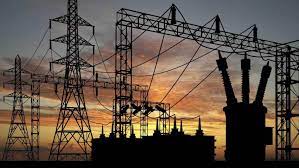Power Sector On Brink Of Collapse Over Low Grid, 14 Idle Plants

All appears not well with the Nigerian power sector as strong indications have shown it’s now heading for the rocks.
Recent developments in the sector suggest the blame game among players in the electricity value chain have intensified in the last few weeks, leaving hapless consumers to bear the brunt.
Amidst the rhetoric displayed by industry players, consumers appear left in the cold with no one listening to their complaints even as per kilo watt hour of electricity consumption of households and industries continue to dwindle by the day.
Last week for instance, the national electricity grid collapsed twice in 24 hours, throwing most part of the country into darkness.
Prior to the grid collapse, there were massive loading shedding nationwide following very low power generation by the Generation Companies (Gencos) for the Transmission Company of Nigeria (TCN) to wheel through its grid to distribution companies nationwide at a time 14 power plants were idle.
The initial collapse which occurred last Monday at 10.40am was followed by another on Tuesday that led to outages across the DisCos network, causing a shut out of 600MW from Africa’s largest power plant in Egbin, Lagos
Responding to the outage, Eko Electricity Distribution Company (EKEDC) in a notice on its verified Twitter handle expressed regrets over the total system collapse on the national grid at 10.40am today (yesterday), leading to outages on its network.
‘‘We are closely monitoring the situation with our TCN partners to determine the cause and a timeline for resolution. We sincerely apologise for the inconvenience as we will keep you posted on the situation. The grid collapse has however led to a drop of 600MW of electricity generation at Africa’s largest power plant in Egbin, Lagos.
Similarly, Ikeja, Kaduna and Enugu DisCos all sent out messages to their customers confirming the system collapse.
General Manager and spokesperson at Transmission Company of Nigeria (TCN), Mrs. Ndidi Mbah, said a summary of the power generating profiles in the last two months, for instance, clearly showed that fourteen (14) gas powered generating stations were either not generating at all or had limited generation capacity at various times within the period, further depleting the quantum of power generation available for transmission into the grid on a daily basis.
According to Mbah, power generating stations in this category included; Omotosho units 5 and 6, Olorunsogo units 3, 4 and 6, Omoku units 3 and 6, Omotosho NIPP units 3 and 4, Delta units 15, 17, and 18, Afam VI units 11 and 12, Olorunsogo NIPP unit 3, Ihovbor NIPP unit 2, Sapele Steam unit 3, Sapele NIPP unit 1, Odukpani NIPP units 1 and 3, and Okpai units 11, 12 and 18.
Also, within the same period, Jebba Hydro and Shiroro Power Generating Stations were either out or had limited generation, causing additional loss of 232MW from the grid, while other power generating plants such as Omotosho units 3and 4, Olorunsogo units 1, Delta units 10 and 20, Afam VI unit 13, Ihovbor NIPP units 4, Geregu NIPP units 22 and 23 and Odukpani NIPP units 2, 4 and 5, have also been out either on fault or for scheduled maintenance, causing a further loss of about 3,180MW from the grid.
She explained that a combination of the above scenarios have persisted and the total effect on the grid is persistent low generation, which TCN operators have had to strive to dispatch in a way that will not jeopardize the stability of the grid.
‘‘More recently, from the March 1-4 2022, there was generation shortfall due to water management in Shiroro and Jebba hydro with the loss of 307MW and 125MW respectively from both stations. Within the same period, there were fault and technical problems in Egbin, causing 514MW shortfall and in Geregu causing 230MW shortfall, while reported fault at Alaoji NIPP reduced generation from the substation by 263MW.
Gas constraint alone in Olorunsogo gas generating plant reduced generation from the station by 104MW, while Omotosho gas and Sapele NIPP lost lost 102MW and 263MW respectively.
In Omotosho NIPP, there was generation shortfall of 233MW and in Omoku a shortfall of 112MW. Two units in Okpai have limited generation due to technical problems causing a 204MW drop in generation and in Afam VI 511MW drop in generation. In the midst of these developments, consumers have continued to carry the burden of losses all by themselves. (Sun Newspaper)






